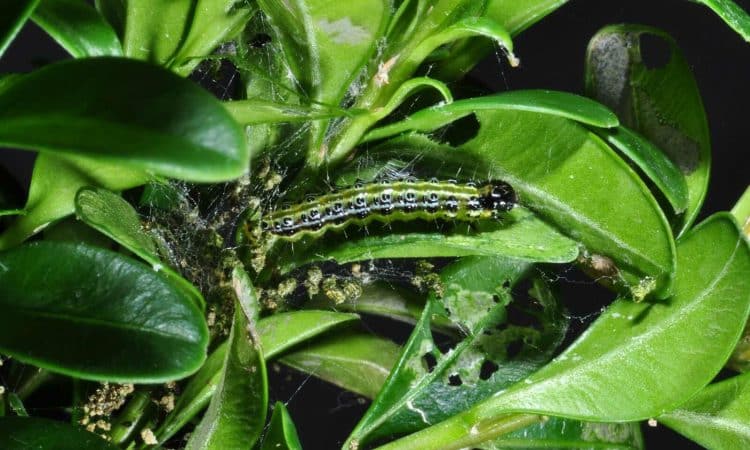
It’s time to take action against those pesky box tree moth caterpillars! The TOP NEWS team is here to help with 5 simple tips to keep your boxwood healthy and happy.
In the north, the rule of thumb is to control the voracious box tree moth in April or August, “in warm years and in warm places even a little earlier,” says Dr. Thomas Brand, Plant Protection Office of the Lower Saxony Chamber of Agriculture (LWK). This year, the damage is severe in many places.
Collect, flush away, cut back boxwoods
Collecting the voracious caterpillars limits the damage. However, this requires a good eye because the well-camouflaged, green-black caterpillars are difficult to find. Rinsing with a high-pressure cleaner is also recommended, but is not often possible due to the risk of injury and fungi. In any case, it is necessary to prune the caterpillars and dispose of the cuttings.
2. use biological agents against caterpillars in boxwood
Insecticides that are classified as harmless to bees are permitted for control. Many products contain natural antagonists. These are important products against box tree moths:
- Dipel ES with Bacillus thuringiensis (Bt) ssp. kurstaki,
- XenTarie with the Bt ssp. aizawai
- NeemAzal T/S with the active ingredient Azadirachtin for boxwood up to 50 cm high,
- Pest-free Careo with the active ingredient acetamiprid.
3. promote beneficial insects and predators against the moth caterpillars
The box tree moth is a butterfly that can be recognized by its white wings with a dark edge. This invasive species was introduced from China around 2006. It has been spreading here ever since. Infestations have also been increasing in Lower Saxony since 2018. The LWK has its own information sheet.
Spiders, wasps or birds such as sparrows, redstarts and others hunt for caterpillars of the box tree moth. For a while there seemed to be hardly any natural enemies of the invasive species, but this is now changing. In any case, a garden design that encourages beneficial insects will help.
4. closely observe leafhopper caterpillars in boxwood every year
Because of their hidden lifestyle and camouflaged caterpillars, infestations are often only discovered late. If feeding and fine webs can be seen on the outer leaves, the caterpillars have often been feeding for some time. Pheromone traps detect their presence. However, they do not combat the moth, even though they are often advertised as such. Wasps, birds and other beneficial insects have so far eaten too few caterpillars.
There are 2 generations per year: In spring, the caterpillars feed until around mid-May, when they pupate. The moths fly from around June and lay eggs. The next generation feeds from the end of July until September. New moths can then be seen, which lay eggs again. The caterpillars that hatch from them spend the winter spun between leaves.
5. hope for new shoots from the box tree
Check for feeding in spring: signs are droppings, scraping, webbing and caterpillars. Their droppings trickle under the plants. Midribs or leaf edges often remain on leaves that have been eaten.
In the case of heavy feeding, above-ground parts die off. The boxwood can regenerate if the infestation is minor. If infestation by the box tree moth is far advanced, the plants can be cut back deeply. They are quite robust: new growth is possible the following year.

